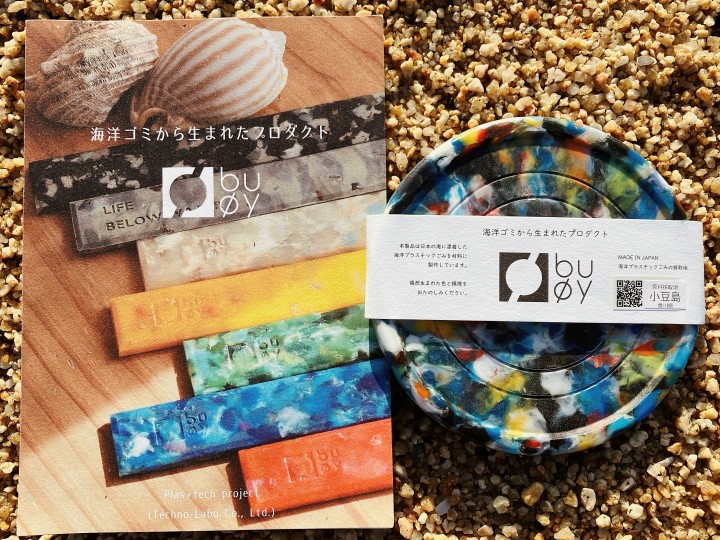Types of plastics and their dangers
In columns (1) and (2), we described two types of microplastics, primary and secondary microplastics, and the dangers and countermeasures for each. In this issue, we will touch on the types of plastics, which are the source of microplastics, and their dangers, and also consider recycling. First, what are the different types of plastics? The following are five typical examples [1].
1) Polystyrene (PS): Used in food trays, polystyrene foam, cup noodle containers, etc. When soaked in boiling water, etc., it can release styrene, a known carcinogen.
2) Polyethylene (PE): Used in plastic bags, plastic wrap, kerosene tanks, and other general-purpose packaging due to its high versatility, durability, and ease of processing. Its high hydrophobicity makes it a strong adsorbent for persistent organic pollutants (POPs). Second only to polypropylene in terms of production volume.
3) Polyvinyl chloride (PVC): Used for hoses, credit cards, etc. A ninja-like, changeable plastic that can be made soft or hard by adding additives such as heat stabilizers and plasticizers*. Contains chlorine in its structure and releases dioxins, a cancer-causing substance, when burned. Compared to other plastics, it poses a higher risk of harm to the human body.
4) Polyethylene terephthalate (PET): Used for PET bottles and egg cartons. Transparent, airtight, and relatively stable plastic.
5) Polypropylene (PP): PP has rigid properties and is used for caps and other parts subject to force. As of 2023, it is the most widely produced plastic in Japan [2].
Various additives such as plasticizers*, UV absorbers**antioxidants, colorants, and flame retardants are used in manufacturing these plastics. These additives have low molecular weight and are not chemically bonded to the plastic, so they dissolve out and enter food and water. When they enter the human body, they are known to disrupt the function of hormones and may cause cancer [3]. Furthermore, plastics discarded in the environment such as oceans, rivers, and forests gradually become smaller microplastics due to the power of sunlight (ultraviolet rays) and waves, and their specific surface area becomes larger, which increases the risk of leaching toxic substances.
Plasticizer*: A generic term for substances added to materials to give them flexibility and elasticity.
Ultraviolet absorber**: Additives added to prevent degradation of plastic performance due to ultraviolet rays.
Methods of Recycling
When collecting and recycling the plastics listed above, there are three main categories.
1) Material recycling (MR): Collected waste plastic is crushed and melted to be reused as plastic products again.
2) Chemical Recycling (CR): Waste plastics are broken down to the molecular level through chemical reactions and recycled into new raw materials.
3) Thermal recovery (TR): Incinerating waste plastics and reusing the energy obtained in the process.
The recycling and recovery rates of plastic waste, including MR, CR, and TR are 23%, 4%, and 56%, respectively [4]. In recent years, the use of MR has been slow to take off, as plastic products have become more sophisticated and diversified and are increasingly used as composite materials. On the other hand, the use of heat recovery is increasing in place of landfill disposal, as landfill sites are getting tighter and there is a shift from disposal of waste to effective use of resources. However, the CO2 emissions associated with incineration have been seen as problematic because they contribute to global warming.
Clean Ocean Ensemble’s Initiatives
As part of our efforts to collect, survey, and recycle marine debris (MR above), we conduct beach cleanup activities on Shodoshima Island, Kagawa Prefecture. We also investigate the composition and quantity of litter by collecting each bag separately and weighing each bag (Fig. 1). Furthermore, by sorting the trash by material, we recycle it into upcycled products (Fig. 2). This activity has become a regular monthly event at Tao Beach in Sakate, Shodoshima, where local residents and people from outside the island can participate, and we are actively engaged in this activity [5]. We will be making announcements on social media, etc., so please feel free to contact us if you are interested.


References
[1] Takada, H. (Supervisor); Crayon House Editorial Department (Editor); Kurihara, T. (Illustrator).Purashikku Monsutā o Yattsukeyō! Kimi ga Chikyū no Tame ni Dekiru Koto; Crayon House, 2020.
[2] Statistics Data |About PVC|Vinyl Environmental Council (VEC), https://www.vec.gr.jp/english/pvc/statistics.html (accessed: January 1, 2025).
[3] Nakajima, R. Kaiyō Purasutikku Osen: “Pura Nashi” Hakase, Gomi wo Kataru [Marine Plastic Pollution: “Plastic‑Free” Doctor Talks About Garbage] (in Japanese); Iwanami Shoten: Tokyo, 2019.
[4] Hamba, M., Kagaku Kogaku, 2021, 85 (3), 145-148., Current Status of Plastic Recycling in Japan. https://www.scej.org/docs/publication/journal/backnumber/8503-open-article.pdf (accessed: January 1, 2025).
[5] Website of the NPO Clean Ocean Ensemble https://cleanoceanensemble.com/ (accessed: January 1, 2025).
Authors: Tomoaki Inoue, Shogo Ishiyama, Masatoshi Nakakuni
